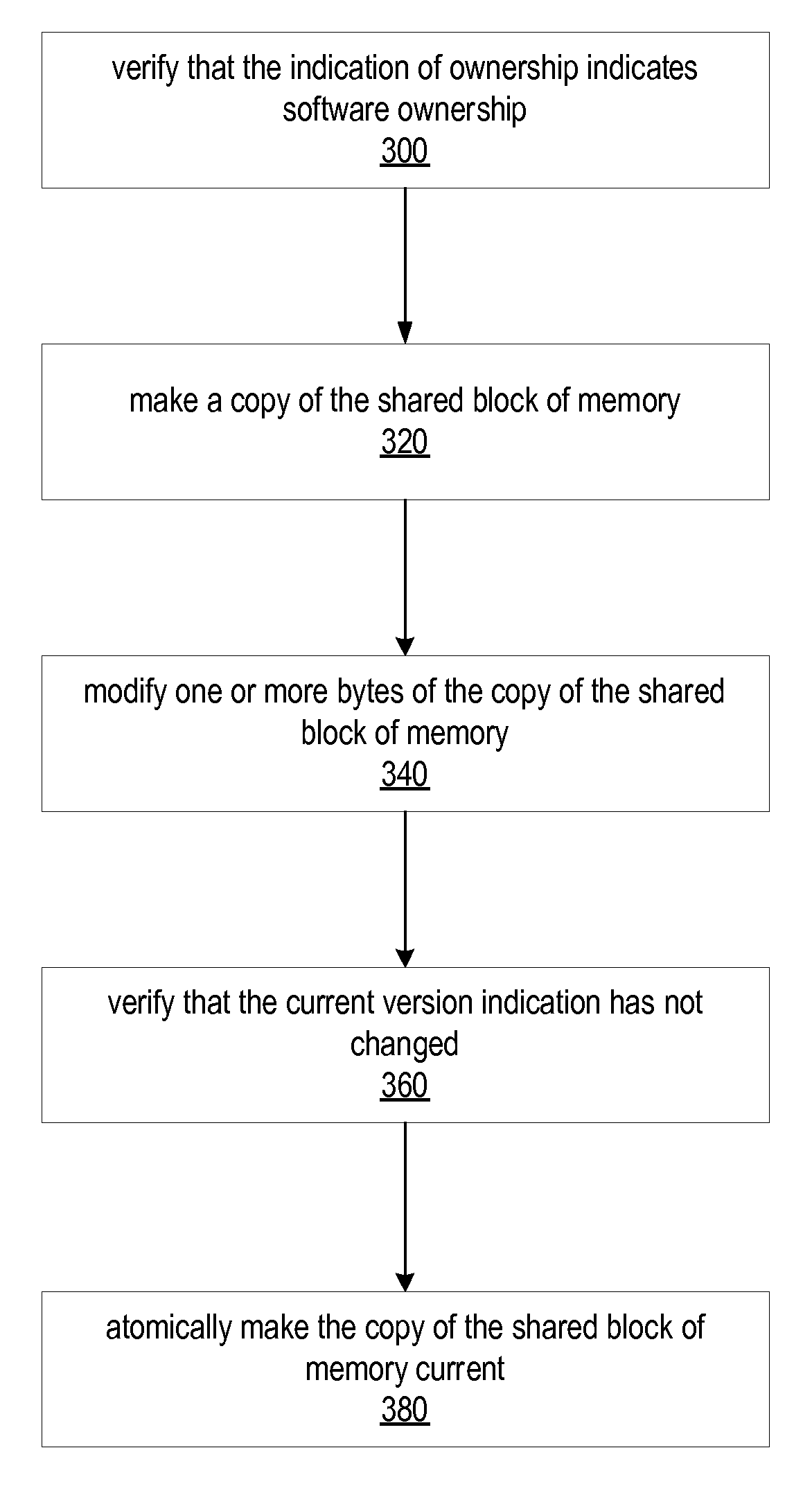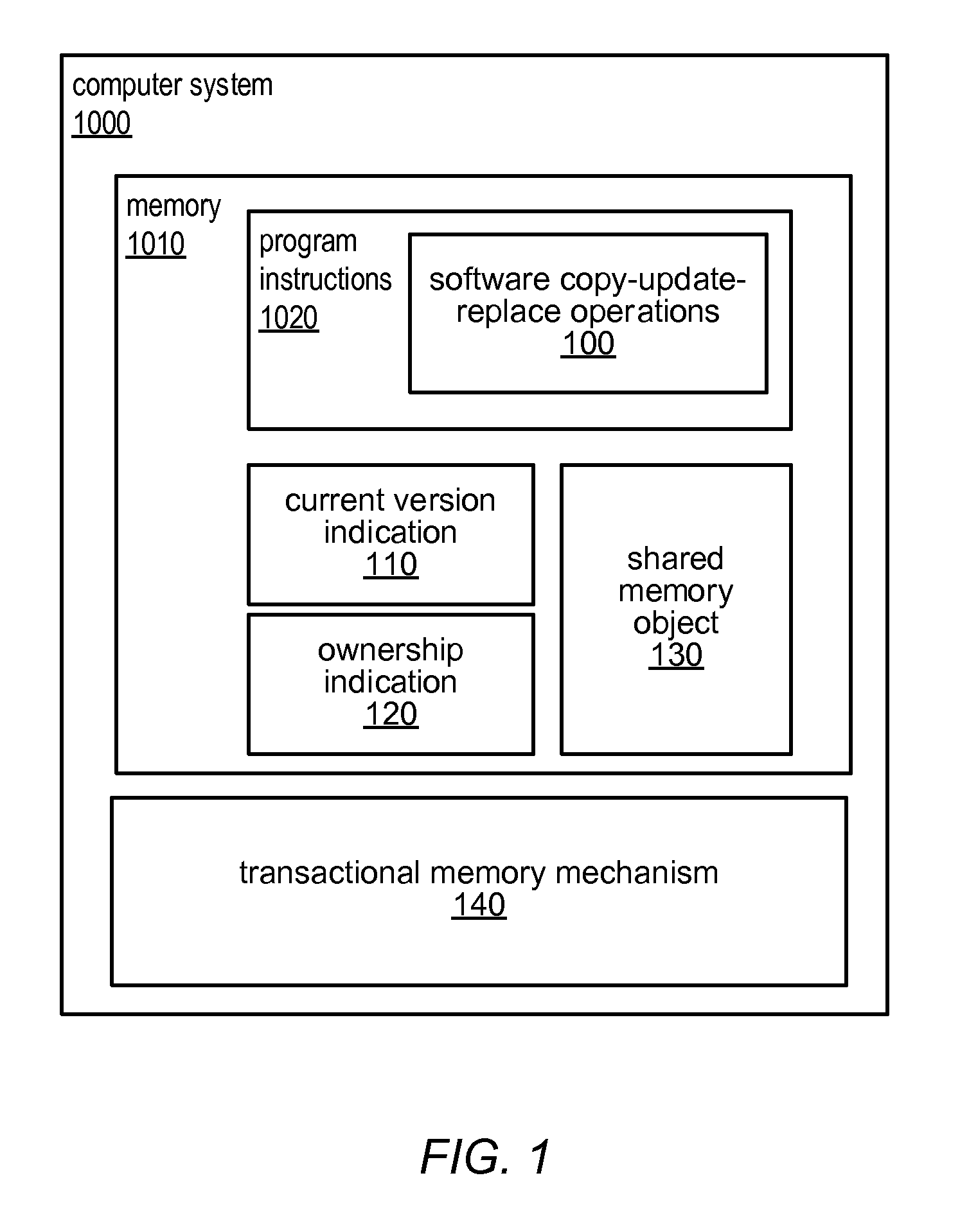Coordinating Synchronization Mechanisms using Transactional Memory
a synchronization mechanism and transaction memory technology, applied in the direction of program control, multi-programming arrangements, instruments, etc., can solve the problems of affecting performance, affecting performance, and affecting performance,
- Summary
- Abstract
- Description
- Claims
- Application Information
AI Technical Summary
Benefits of technology
Problems solved by technology
Method used
Image
Examples
Embodiment Construction
[0028] As noted above, transactional memory (TM) may be used in conjunction with various software synchronization mechanisms that copy a current version of an object, update the copy, and then cause the copy to become current atomically by changing a “current version” indicator. For example, a pointer to an object in memory may be considered a “current version” indicator since it may be updated to point to a modified copy of an object, thereby making the modified copy the “current” version of the object. In general, a collection of data (perhaps an object or a block of memory, but more generally an arbitrary collection of data) may have operations applied to it by threads that: [0029] i) identify the “current” collection of data, perhaps by reading a “current pointer” or “current value identifier”, [0030] ii) copy the identified collection of data to a private area (and in some cases verify that the copy is consistent, retrying if not), [0031] iii) apply changes to the private copy ...
PUM
 Login to View More
Login to View More Abstract
Description
Claims
Application Information
 Login to View More
Login to View More - R&D
- Intellectual Property
- Life Sciences
- Materials
- Tech Scout
- Unparalleled Data Quality
- Higher Quality Content
- 60% Fewer Hallucinations
Browse by: Latest US Patents, China's latest patents, Technical Efficacy Thesaurus, Application Domain, Technology Topic, Popular Technical Reports.
© 2025 PatSnap. All rights reserved.Legal|Privacy policy|Modern Slavery Act Transparency Statement|Sitemap|About US| Contact US: help@patsnap.com



